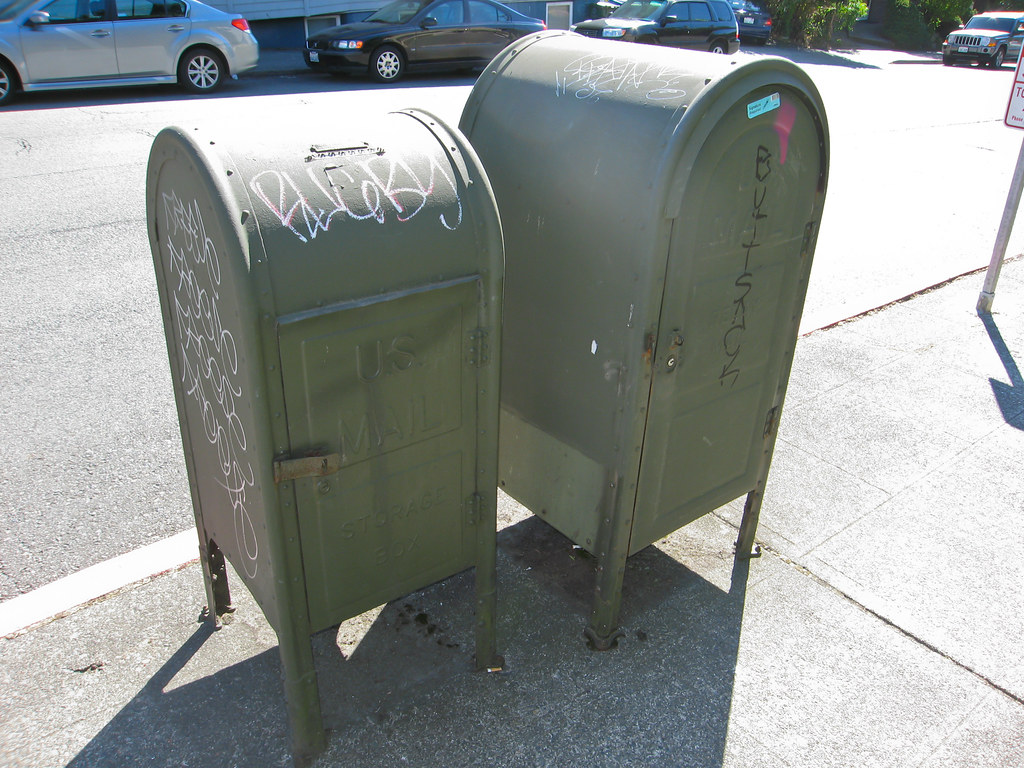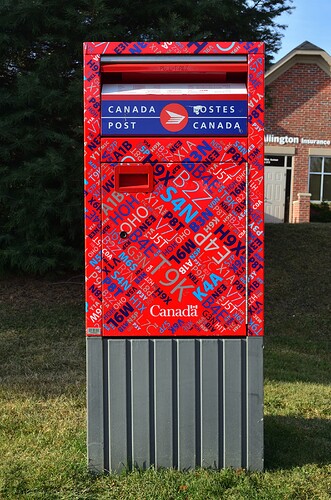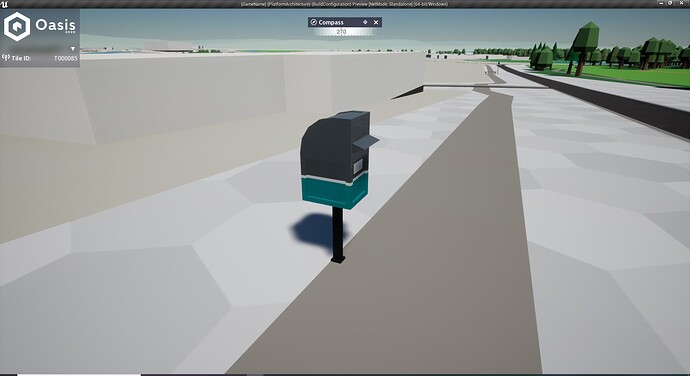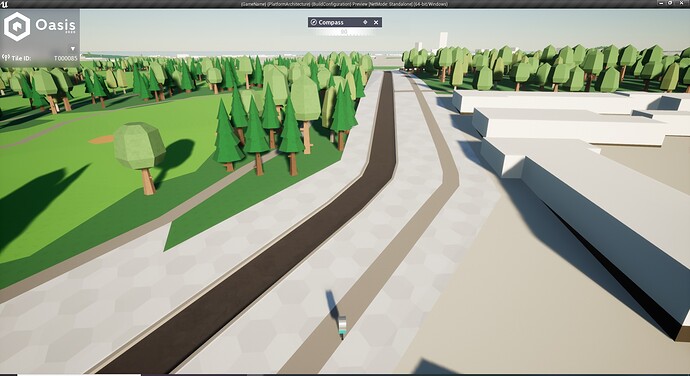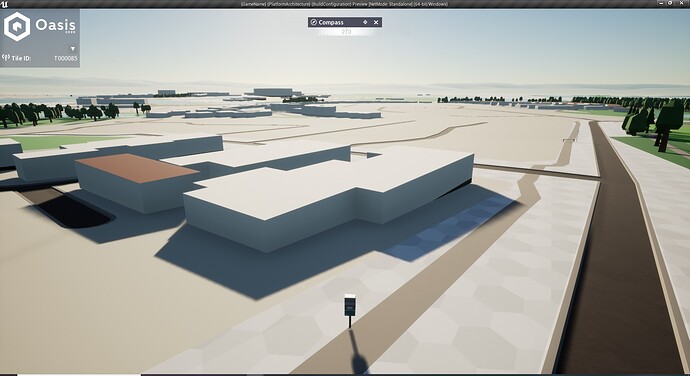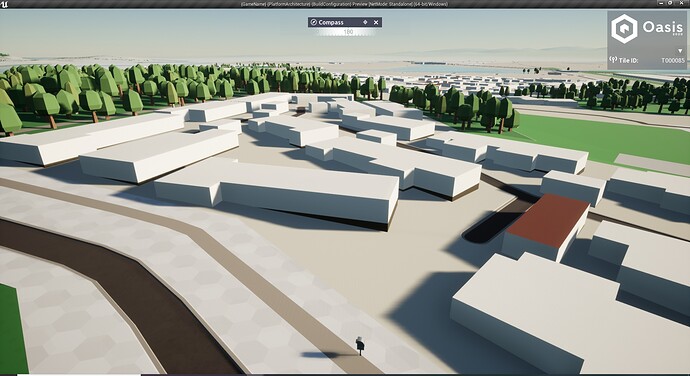Here you go, Derek. Australia Post post boxes in heavy traffic areas: (File:Australia Post boxes.jpg - Wikimedia Commons), red for normal post, yellow for Express Post. One of the skinny red boxes by itself is at Node: 4339193974 | OpenStreetMap. This is a normal, more common, street side box: File:Australia Post box.jpg - Wikimedia Commons, with one at Node: 2156901398 | OpenStreetMap
I added some representative examples from the United States to the post_box:type page on the wiki. The USPS makes even more distinctions regarding the delivery class, but these distinctions are orthogonal to the collection boxes’ form factor. I also included some private parcel carriers; most use a shape very similar to FedEx and UPS.
By the way, the existing post_box:type classification scheme doesn’t make much sense to me in the context of USPS collection boxes. The vast majority are freestanding, thus falling under the wiki’s Royal Mail definition of a pillar, but the only “boxes” that actually meet the usual English definition of a pillar are indoor mail chutes. The only receptacles that touch the ground, as Royal Mail pillars do, are the large bins that are wider than they are tall.
In  Poland I found following from Wikimedia:
Poland I found following from Wikimedia:
@Minh_Nguyen I think pillar is fine, at least for now, for the USPS, unless you can think of a simple term to cover free-standing boxes supported on legs rather than anchored in the ground. On the latter point the classic British pillar box has quite a substantial underground component:
`
`Today is the day I
—
learnt that they’re not just attached to the floor! pic.twitter.com/8SegX19u6X
feckless fox(@fecklessfox100) May
7, 2022
You can find some examples for “Poste Italiane” (italian post operator) here: Category:Poste Italiane - Wikimedia Commons
Here’s an example from Switzerland: Switzerland/amenity=post box - OpenStreetMap Wiki from the OSM Wiki and from Wikimedia Commons: Search media - Wikimedia Commons
If a standard collection box on legs can be tagged post_box:mounting=pier, then I don’t know what additional information post_box:type=pillar provides that isn’t misleading. It would be more valuable to distinguish the Large and Jumbo boxes that sit on the ground; it’s awkward to describe anything of that shape as a “pillar”. (In case anyone is curious, what’s currently called a Standard Collection Box was originally introduced as a “Package Box”.)
On the post_box:type talk page, there’s been some discussion about whether it’s OK to coin new non-British types to more accurately describe operator-specific variations. Canadian mappers are doing this already for their community cluster mailboxes, which also exist here in the States. If we go down this path, then terminology such as standard and large would be more intuitive in my opinion. Otherwise, maybe we should skip post_box:type altogether in favor of post_box:design and post_box:mounting. But I realize it’s a bit off-topic for this thread.
With regard to other types of post box, we also have sort of similar, but different,  street side boxes such as https://goo.gl/maps/oa2iLJmgbFJR8Prx7 & https://goo.gl/maps/ZygZ5MDroW8BEkyg7. These are filled by truck coming out from the local Delivery Centre, & the local postie then stops at them part way during their run, to pick up more mail to deliver.
street side boxes such as https://goo.gl/maps/oa2iLJmgbFJR8Prx7 & https://goo.gl/maps/ZygZ5MDroW8BEkyg7. These are filled by truck coming out from the local Delivery Centre, & the local postie then stops at them part way during their run, to pick up more mail to deliver.
Not a “Post box” as such, as the public can’t drop letters in there to be delivered, but what would you call them?
Those are relay boxes. amenity=relay_box has been used mainly in the Toronto area, but they’re common in other countries too. The USPS distinguishes between relay and storage boxes, but I don’t know of a tag for the latter. I’d be pretty bad at telling the difference between the two: the storage box is smaller and has a door on the front instead of on the side.
Hi Fizzie41! Thanks for the link. I’m sorry it took me so long to reply but I had technical issues with Australia that I won’t go into here.
This is the post box in place with my default model, i.e. The one I use when I cannot tell from the OSM tags what it should look like:
This is the same model with an added ‘direction’ tag:
Here are some wider views of the post box looking East, North, West and South:
I am going to create a ‘red skinny’ model (because that’s what it is!) - but which OSM tags should I use to determine this? Would post_box:design be appropriate?
This is what it actually looks like:
For now, I’m going to model the ‘red-skinny’ and use this as my default for all Australian post boxes.
Hi! Thank you for your examples.
I am sorry it took so long to reply.
I will create the terrain for the four locations and then model the post box.
Hi!
I have looked at the post_box:type examples and they are very useful. Do you have to locations for these?
Is ‘delivery class’ a thing in OSM data? It would be very useful for me - but I am not sure if this is the sort of information that other people want in OSM.
Please do discuss post_box:design and post_box:mounting! I am very interested in both of these 
Thank you for your example. I will create the terrain and then model the post box.
Not a prob!
OK, but it should be red, not black & green! At least around my area, this version is much more common than the “red-skinny”, so it should probably be your default for Australia.
Do have to ask though - what are you doing with them?
If you click on each of the images in this gallery, some of them have coordinates under the description and author metadata. Click the coordinate and then the OpenStreetMap logo to see the coordinate in OSM. I went ahead and mapped them but without using post_box:type since I’m unsure about the best values.
There are a few uses of post_box:priority=yes in the UK, but nothing beyond that as far as I can tell.
post_box:design is very specific. It seems like a better fit for your use case, with post_box:type being a fallback. I used it a couple times to distinguish between standard, large, and jumbo sized collection boxes, but the relatively small number of remaining antique boxes should probably be tagged with manufacturer and model for more specificity.
post_box:mounting has a lot of overlap with support and support:material. Regardless, these keys seem a lot more intuitive to me than this post_box:type key. Like many *:type keys, it purports to be an internationally harmonized system but lacks in international applicability.
Thank you. I did not know this. I clicked on a few images but I must have selected ones that did not have any location information.
For Australian post-boxes I will use post_box:priority=yes to distinguish between the red and yellow boxes.
I think you are right that post_box:design is a better fit for me.
I’m modelling the red one now! ![]()
I’m testing a system for creating world-side terrain and I needed a feature that was reasonably common, had an orientation and was also nationally distinctive. Post-boxes seemed perfect since they seem to stick around for a while.
